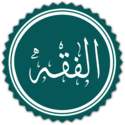
Back تربة حسينية Arabic তুরবাহ Bengali/Bangla Mohro Esperanto مهر (نماز) Persian Turbah French Թուրբահ Armenian Turbah ID Turbah Malay Turbah Romanian Турба (шиизм) Russian
| Part of a series on |
| Islamic jurisprudence (fiqh) |
|---|
 |
| Islamic studies |
A turbah (Arabic: تربة, lit. 'soil'), or mohr (Persian: مهر, lit. 'seal'), also known as khāk-e shefā (Persian: خاکِ شِفا, lit. 'medicinal soil', also used in Urdu) and sejde gāh (Persian: سجدہ گاہ, lit. 'place of prostration', also used in Urdu), is a small piece of soil or clay, often a clay tablet, used during salat (Arabic: صلاة, lit. 'Islamic daily prayers') to symbolize earth.[1] The use of a turbah is recommended (Arabic: مُسْتَحَبّ, romanized: mustahabb, lit. 'beloved') according to the Twelver Shia school of Islam, a unique practice of the sect, and many ahadith mention the benefits of prostration (Arabic: سجدة, romanized: sajdah) upon soil or an alternative natural material. The most recommended soil is that of Karbala, the site of the martyrdom of Husayn ibn 'Ali; however, soil from anywhere may be used. In the absence of soil, plants or items made from these may be substituted. This provision has been extended to include paper.[2]
Following instruction from the Qur’an, the Shia Imam Ja'far al-Sadiq stated that "prostration must be performed on pure earth or what grows on it, provided that it is not eaten or worn." (like leaves, wood, stone/marble so on). For example, prostration on paper is permissible because it is made of natural elements grown on earth.[3]
- ^ Orr, Francine (26 November 2001). "Sharing the Faith, Spreading the Word". Los Angeles Times. pp. E2.
- ^ Fontan, Victoria (2008). Voices from post-Saddam Iraq: living with terrorism, insurgency, and new forms of tyranny. ABC-CLIO. p. 42. ISBN 978-0-313-36532-4.
- ^ Ahlul Bayt Digital Islamic Library Project. "In A Nutshell: Laws and Practices." 1 April 2010. <www.al-islam.org>.